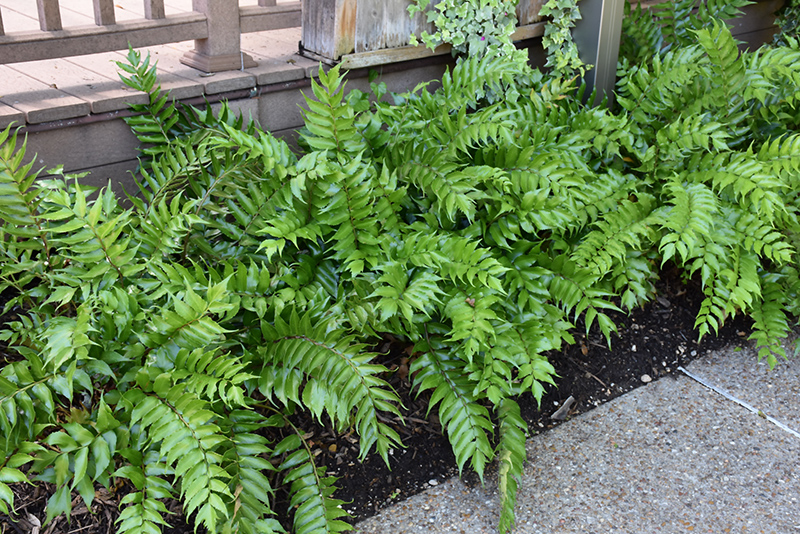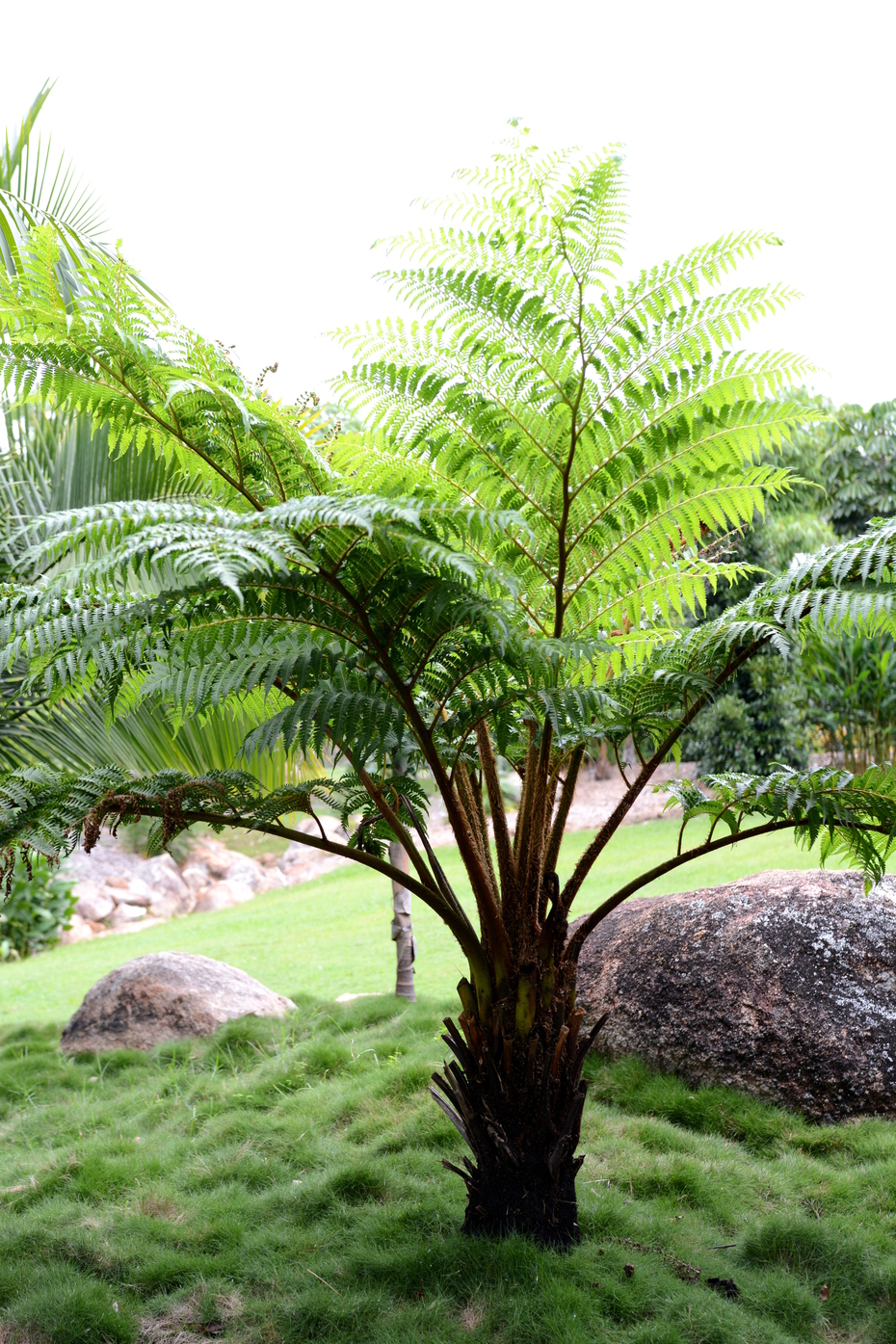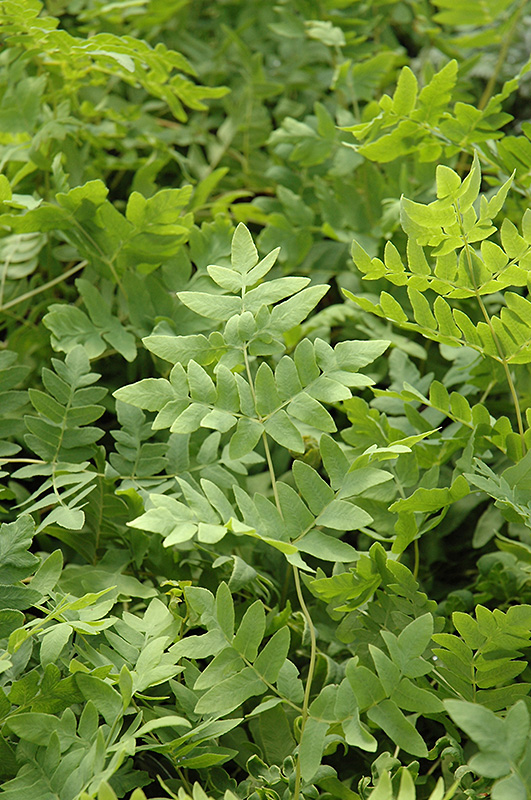Y’all know I’m a huge fan of having plants around my place, both indoors and outdoors. I’ve given you plenty of ideas in previous plants and posts, but today I want to focus on one category of plants in particular: various types of fern plants for your home. Cuz’ let’s face it. Ferns are just the most gorgeous plants, and I have dozens in my home – no kidding.

Many different types of ferns could be the perfect new plant for you. Like any type of plant, preferences and care requirements vary from fern to fern. While some might require partial shade and well-draining soil, others might prefer dryer, brighter environments instead. Be sure to know what your fern needs.
To make your life a little easier, Here’s the most comprehensive list of ferns you should consider for your home:
Indoor Ferns General Tips To Keep Them Thriving

I love large indoor plants. Fortunately, many types of fern plants can scratch this itch! While indoor ferns won’t grow as big as outdoor ones, you’ll still be able to enjoy having larger indoor plants if that’s what you’re after. If not, placing smaller ferns near your framed art is always a great alternative.
Generally speaking, your new fern should do alright if you keep a few “best” practices in mind. First, make sure your plant has ample room to grow, especially near the growing season in a pot with good drainage. You don’t want root rot.

Second, use a plastic pot instead of a clay pot to retain moisture. Avoid putting your ferns in direct sunlight. Opt for indirect light instead. Too much sun is not great for a fern. They like some shade. Lastly, just do basic maintenance—like pruning and fertilizing—to keep your plant in tip-top health. Prune once a quarter and fertilize once a year.
Bird’s Nest Fern One of Many Elegant Types of Fern Plants

Up first is the Bird’s Nest Fern, also known as the Asplenium nidus. This fern is great, as it can be grown indoors or outdoors. Rock gardens are an especially popular place for people to put these plants. For indoors, I might suggest finding a well-placed and gorgeous side table to place your fern.
The Bird’s Nest Fern prefers a lot of moisture, so outdoor placement will only work if your area gets a lot of rain and has an area with suitable shade. If not, keeping up with its moisture, humidity, and lighting needs will be much easier to do indoors.
Remember, these ferns can grow quite large, maxing out at a height of up to 60 inches with a width of up to eight inches. As such, make sure the place you put your fern will still be suitable as it grows.
Boston Fern

The Boston Fern, also known as the Sword Fern, and is a common name in the world of household plants. I am gonna give it to you straight. These are my favorite ferns for indoors. They can be fickle and not for newbie plant moms and dads. But for the work and payoff, these Boston Ferns are a dream for interior d design. Bonus? They are non-toxic and easy to care for with a simple misting bottle, these ferns are great for first-time plant parents.
With the proper care, these ferns can grow quite tall, so they might outgrow your coffee table if you’re not careful. Many people prefer to hang them from their front porches instead, especially in the middle of the year.
Proper care requires indirect sunlight if indoors. For outdoors, you’ll want to go with full shade. Either way, you’ll need moist, well-drained soil if you want your plant to prosper, in addition to high humidity levels at all times.
Delta Maidenhair Fern types of fern plants

One of the more unique-looking ferns that I love is the Delta Maidenhair Fern. This thin-stemmed, small-leaved fern is a bit more challenging to grow than similar ferns due to its humidity requirements.
While humidity in the air is fine, you’ll want to avoid misting this plant, as it won’t take well to this practice. You’ll also need to keep it away from direct sunlight, as this can surely harm the fern. If possible, I’d suggest placing this one in your bathroom.
The best part about this plant? Well, it doesn’t grow very big. Maxing out at around one and a half feet tall, you won’t need to worry about the Delta Maidenhair Fern outgrowing its area any time soon.
Holly Fern

The Holly Fern is another fern you can grow indoors or outside. Native to East Asia, you can find these fern plants in three different varieties: Japanese, Hawaiian, and East Indian.
Being resistant to less-than-ideal water, lighting, and heating conditions, I think these are a great option for beginners. They work really well indoors as well since they can get by with minimal lighting.
Aside from being easy to grow, the unique leaves are another reason why these plants are particularly popular. Dark green and measuring between three to four inches long, the leaves look similar to the holly bushes these ferns are named after.
Lemon Button Fern

Also known by its scientific name of Nephrolepis cordifolia, the Lemon Button Fern is a smaller type of fern that looks quite adorable in an appropriately sized pot.
Unlike many other ferns, this particular fern has rounded leaves. These plants usually stay under 12 inches tall, making them ideal as interior decorations. Add in the fact that they love shade and you’ve instantly got a winner on your hands!
Aside from shade, simply make sure that your fern is placed in a high-moisture environment with well-draining soil if you want to set it up for success.
Types of Fern Plants – Check out Staghorn Ferns

Although you’ll often see these displayed as outdoor hanging plants, mounting Staghorn Ferns indoors is an especially popular alternative that I think looks amazing.
Staghorn Ferns are best known for their uniquely shaped fronds, which somewhat resemble the horns of a stag (a male deer). In addition to the larger, green, fertile fronds up top, these ferns also have infertile brown fronds as well.
These help protect the plant so don’t make the beginner mistake of removing them! Just leave them be. Instead, provide your plant with a wood base, shade, and high humidity. These plants require a lot of watering, but as they look quite impressive and can live for a long time, I think it’s worth the bit of extra effort.
Outdoor Ferns

Growing outdoor ferns is one of my favorite backyard ideas DIY, but that doesn’t mean it’s always easy. Ferns grown outdoors are a bit pickier than ones grown inside, which means that your new ground cover won’t last long if you don’t select the right types of fern plants for the job!
Fortunately, as long as you have a suitable outdoor pot, a place with the proper lighting, space for future growth, and a bit of time to spend on routine care, your outdoor ferns should be thriving in no time. Of course, since each fern has slightly different requirements, I always recommend checking to ensure you have a suitable area available before getting your hands on a new plant.
Like with the indoor varieties, you’ll have plenty of options to choose from. Here are a few of my favorites that I think will be an excellent choice for your backyard.
More Types of Fern Plants – The Australian Tree Fern

The first outdoor fern I have to recommend to you is the Australian Tree Fern. Why is it an “outdoor” fern? Well, these bad boys can grow up to 50 feet tall, given the proper growing conditions!
They also get quite wide, making it vital to plan ahead before investing in one of these for your yard. It’s not a guarantee, but I’d recommend leaving about 19 feet across for your fern to flourish.
Growing these ferns is fairly standard, as warm temperatures and high humidity are must-haves. Interestingly, though, this plant doesn’t mind direct sunlight. As such, you can pretty much place yours anywhere it will fit.
Autumn Fern
:max_bytes(150000):strip_icc():format(webp)/Autumn-fern-2000-a2f4ef4fa6c54aef9fb73e93efc4ee5e.jpg)
One of the more colorful outdoor ferns you’ll find is the Autumn Fern, also known as the Japanese Shield Fern. This semi evergreen fern goes green in the summer, a pinkish copper in the spring, and turns a copper color come fall time.
These ferns are relatively small, growing to a maximum of about 2.5 feet tall and 2.5 feet wide. Like many other ferns, they don’t do well in full sun so keep them in at least a partially shaded area.
Although they can tolerate cold better than other ferns, wind is one of their weaknesses. With that in mind, try to keep them protected from both the bright sun and the whipping winds if you can.
Cinnamon Fern

Growing up to five feet tall while producing both green and brown fronds, the Cinnamon Fern is a common sight in both gardens and along waterways across North America.
If adding these to your garden, you’ll have to make sure you’re watering them quite frequently. Cinnamon Ferns require extremely moist soil to thrive, as well as partial or full shade.
Aside from their water requirements, though, these ferns are quite easy to grow. If you like the green and brown color combination then I’d definitely recommend considering these for your backyard.
Japanese Painted Fern

Live up North and looking for types of fern plants that can tolerate your climate? If so, then the Japanese Painted Fern is just what you’ll want to get your hands on.
This deciduous fern can tolerate temperatures as low as 30 below, despite technically being considered a tropical fern. Temperatures shouldn’t pose much of an issue for you, so you’ll mainly want to focus on providing it with ample shade and adequate moisture.
The best part about this hardy fern has to be its unique coloring. Boasting variegated fonds with grayish-green leaves and purple veins, it looks unlike anything else you’re likely to have in your garden already.
Lady Fern

Although these can be grown indoors, they might be a bit big if you’re working in a small space. That’s why I tend to think of them more as an outdoor fern, although honestly, either approach is likely to work out just fine.
The Lady Fern has a bright green coloring and grows up to three or four feet tall. Like many other ferns, it prefers warm temperatures, high humidity levels, and bright—but indirect—sunlight.
Like any type of plant, keeping a consistent watering schedule is important. Fortunately, if you’re the forgetful type, the Lady Fern is somewhat drought-tolerant, giving you a bit of wiggle room to work with.
Ostrich Fern

Sometimes referred to as the Shuttlecock Fern, the Ostrich Fern is quite a large fern once fully grown. Thanks mainly to its five feet long fronds, this plant can get up to six feet tall and generally reach between five and eight feet across.
You’ll want to place this fern in an area away from wind and direct sunlight. They prefer moist soil and high humidity levels, which should be manageable. However, since the leaves are easily damaged, I recommend only watering your plant from the ground level to avoid potential plant injury.
Royal Fern

Last but certainly not least is the Royal Fern, a water-loving fern that can grow up to six feet tall. Despite potentially reaching high heights, this plant shouldn’t take up too much space in your yard. Generally, these plants only reach two or three feet across, making them ideal for smaller areas.
You might have considered growing them inside instead if you have lots of wildlife around your place. Fortunately, the Royal Fern is fairly resistant to the appetites of rogue deer and rabbits, so you won’t need to worry as much if you place yours outdoors.
Like most other ferns, Royal Ferns prefer damp soil and shade, although they can survive in direct sunlight in colder climates if given enough moisture.
Why You’ll Love Ferns

Okay, so I’ve shown you a bunch of different types of fern plants you can get. Still, I never actually told you why I think these plants are a great pick. Well, there are a few different reasons I recommend getting your own ferns.
The first reason is coverage. Whether you want to make an entire indoor plant shelf dedicated solely to your fern collection, fill in blank spots on the ground outside, or simply eliminate empty spots around your home, chances are, there’s a fern species that can fit the bill.
Another bonus? Having ferns is especially beneficial inside, as they can serve as beautiful air humidifiers! While some ferns do have specific requirements such as a tropical climate or being planted in acidic soils, these obstacles are quite easy to overcome in a controlled climate, making it possible to grow more exotic ferns in places where they could never grow naturally.
Parting Thoughts

Growing ferns is fairly straightforward, as most of the types of fern plants require similar growing conditions. Of course, providing the ideal conditions for all of the different types of ferns at your home isn’t always possible, but you should still try your best.
When in doubt, consider an artificial fern instead!
Well, that’s everything I have for you today. I hope you found these ferns as fascinating as I did. At first glance, a lot of them look very similar, but once you get into the nitty-gritty details, the unique aspects of each fern start shining through.
Let me know which fern(s) was your favorite in the comments below, and check out my post on homegrown fruits if you’re looking for another plant-related post. Have a great week!
Frequently Asked Questions About the Types of Fern Plants

What is the easiest fern to keep alive?
There are many different types of ferns that are easy to keep alive. If you’re a first-time fern grower then I’d probably suggest starting out with a Holly Fern, a Staghorn Fern, or a Lemon Button Fern.
What is the hardest fern to grow?
Compared to all the other ferns on this list, the Delta Maidenhair Fern is definitely the most challenging of the bunch. With specific sunlight and watering requirements, it’s one of the easier ferns to accidentally damage.
What ferns spread quickly?
Ostrich Ferns are known to spread especially quickly, so you’ll want to keep an eye on them if you have other plants in your yard. If left unattended, they can quickly overtake the area!
How do I keep my fern happy?
It’s easy: just follow the proper care requirements for your particular plant! This varies between ferns but includes the watering schedule, lighting requirements, heat requirements, fertilizing your plants (if required), and repotting your fern when necessary.
Do you put Miracle Grow on ferns?
It depends on the type of fern. For example, while Boston Ferns will do great with a bit of Miracle Grow, other types of ferns—such as the Bird’s Nest Fern—don’t need to be given fertilizer. Always check before switching up your plant’s care package!
How do you encourage ferns to spread?
Cutting the plant into two or three clumps the day after watering is a great way to encourage your ferns to spread. Replant these clumps and keep the area moist until you start to see growth.













